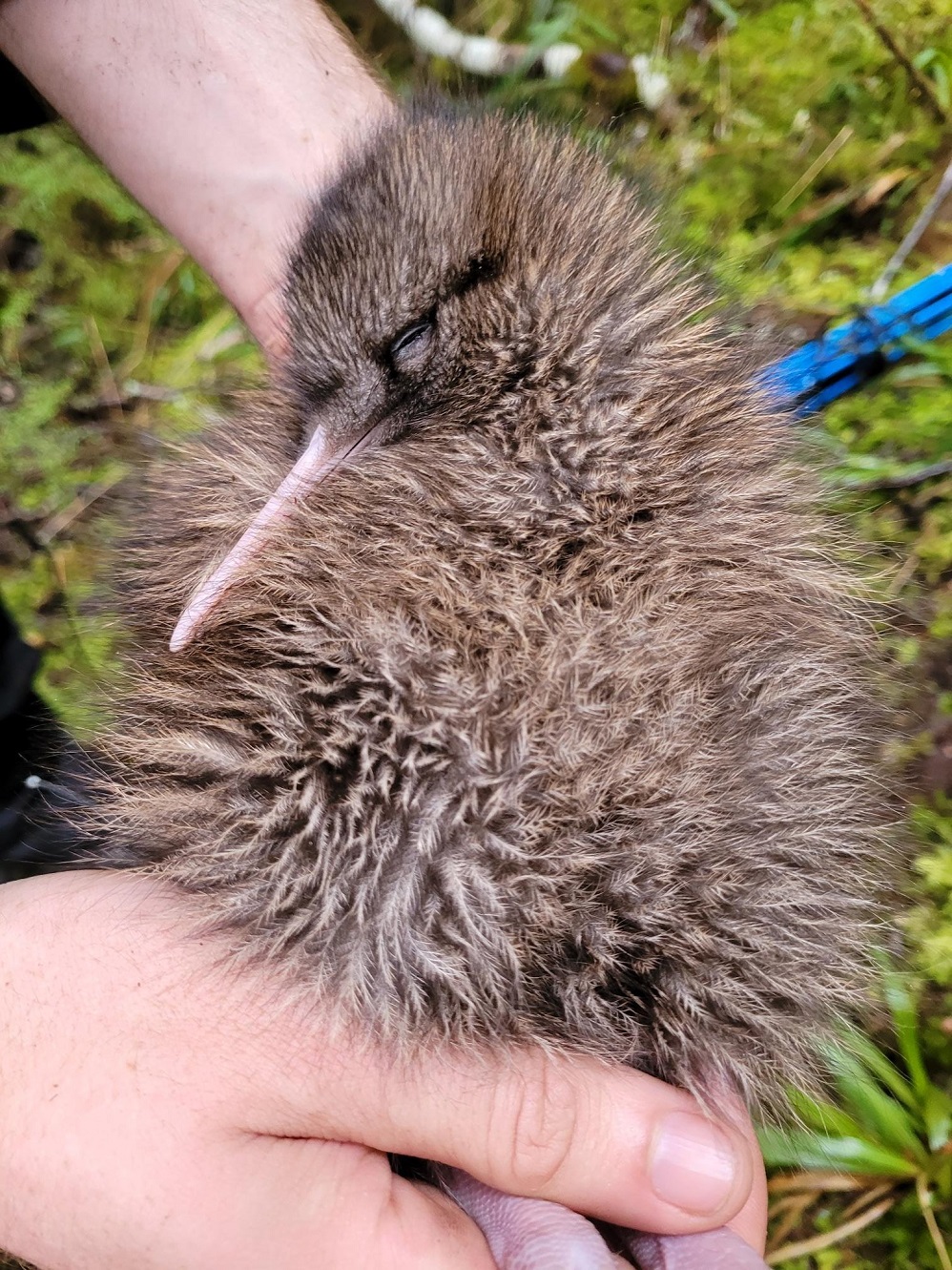
The population of Fiordland kiwi at Shy Lake is growing about 2% per year, officially turning the tide and reversing their decline.
Department of Conservation project lead for kiwi Chris Dodd said the 2% rise represented a significant win for the species at a population level.
"It means not only are chicks surviving long enough to replace the adults, enough are making it to adulthood to officially grow the population."
Prior to the use of 1080 bait to control predators, chick survival in the area was zero. Every year kiwi chicks were hatching and dying, overwhelmingly due to stoat predation, Mr Dodd said.
The Shy Lake population, which Doc had been monitoring since 2017, was representative of the wider Wet Jacket Peninsula — what happened there, was happening across the entire area.
"Adult kiwi are typically more resilient to stoat attacks, but natural mortality — old age, misadventure, disease — means the population was declining by about 2% per year with no chicks surviving to replace the adults.
"Without action, the Shy Lake kiwi population was on a downward slide to extinction."
The first aerial 1080 operation in this remote area took place in winter 2020. It successfully knocked back stoats for the following year, before they began to reinvade from untreated neighbouring areas. A second operation took place last winter.
So far, there had been no stoat predation on this season’s chicks, but there had been some deaths due to weather and misadventure, Mr Dodd said.

"We can’t control the environment, but we can do something about the stoats and give these chicks a better chance. And these latest population figures show it’s working."
It was important never to underestimate the challenges faced in caring for these taonga, Mr Dodd said.
"Shy Lake and Wet Jacket Peninsula are beautiful but remote — most people will never set foot in the place. But that doesn’t mean they shouldn’t know about what’s happening there, so it was great to be able to bring the public along on the journey with us."
One of this season’s chicks had also recently reached 1kg — or what was known as "stoat-safe weight" — months earlier than would normally be expected. This was likely due to the healthy number of invertebrates available for kiwi to eat that were not being lost to introduced predators.
While the tide might be turning for the Shy Lake and wider Wet Jacket Peninsula population, there was still plenty of work to do to reverse the decline across the whole species, Mr Dodd said.
At present only about a quarter of Fiordland tokoeka habitat received any type of predator control, and the Wet Jacket Peninsula was only about 4.5% of their total habitat.
We needed to think bigger if we wanted to stop the decline of Fiordland tokoeka overall, Mr Dodd said.
The next step was a predator-control operation in the Seaforth-Grebe block, east of Wet Jacket Peninsula, which was planned for this winter. Alongside the Fiordland kiwi, it would also protect rockwren, kea, mohua, long-tailed bats and several types of native snails.
"Despite the challenge ahead, we’ve made a great start. The purpose of the study was to find out how to protect these remote kiwi populations and we now know it’s an effective method for protecting tokoeka kiwi."












